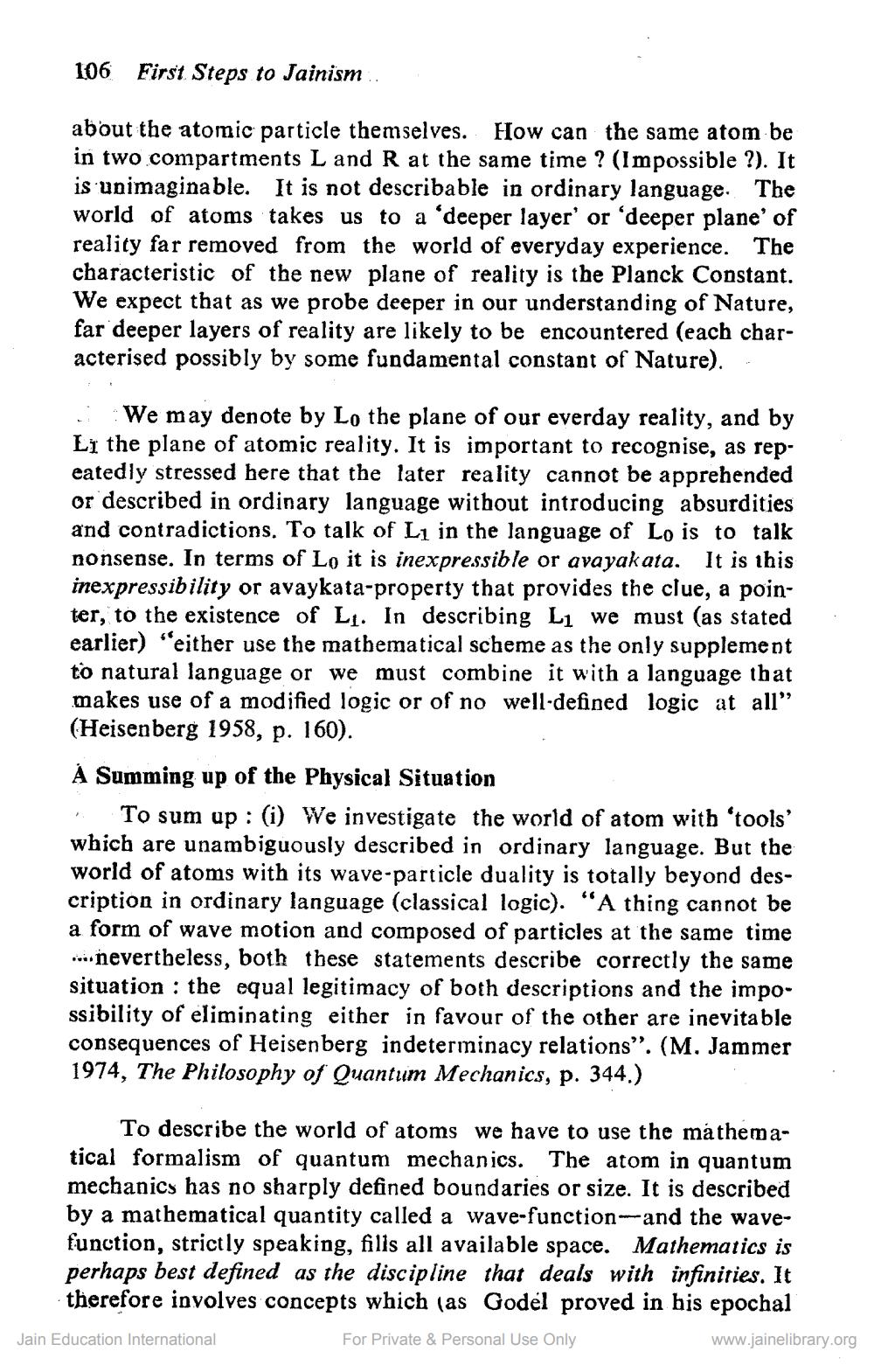________________
106
First Steps to Jainism
about the atomic particle themselves. How can the same atom be in two compartments L and R at the same time? (Impossible ?). It is unimaginable. It is not describable in ordinary language. The world of atoms takes us to a 'deeper layer' or 'deeper plane' of reality far removed from the world of everyday experience. The characteristic of the new plane of reality is the Planck Constant. We expect that as we probe deeper in our understanding of Nature, far deeper layers of reality are likely to be encountered (each characterised possibly by some fundamental constant of Nature).
We may denote by Lo the plane of our everday reality, and by Li the plane of atomic reality. It is important to recognise, as repeatedly stressed here that the later reality cannot be apprehended or described in ordinary language without introducing absurdities and contradictions. To talk of Lį in the language of Lo is to talk nonsense. In terms of Lo it is inexpressible or avayakata. It is this inexpressibility or avaykata-property that provides the clue, a pointer, to the existence of Lj. In describing Li we must (as stated earlier) “either use the mathematical scheme as the only supplement to natural language or we must combine it with a language that makes use of a modified logic or of no well-defined logic at all” (Heisenberg 1958, p. 160).
Á Summing up of the Physical Situation
To sum up : (i) We investigate the world of atom with 'tools' which are unambiguously described in ordinary language. But the world of atoms with its wave-particle duality is totally beyond description in ordinary language (classical logic). "A thing cannot be a form of wave motion and composed of particles at the same time
nevertheless, both these statements describe correctly the same situation : the equal legitimacy of both descriptions and the impossibility of eliminating either in favour of the other are inevitable consequences of Heisenberg indeterminacy relations”. (M. Jammer 1974, The Philosophy of Quantum Mechanics, p. 344.)
To describe the world of atoms we have to use the mathematical formalism of quantum mechanics. The atom in quantum mechanics has no sharply defined boundaries or size. It is described by a mathematical quantity called a wave-function-and the wavefunction, strictly speaking, fills all available space. Mathematics is perhaps best defined as the discipline that deals with infinities. It
therefore involves concepts which (as Godel proved in his epochal Jain Education International For Private & Personal Use Only
www.jainelibrary.org




